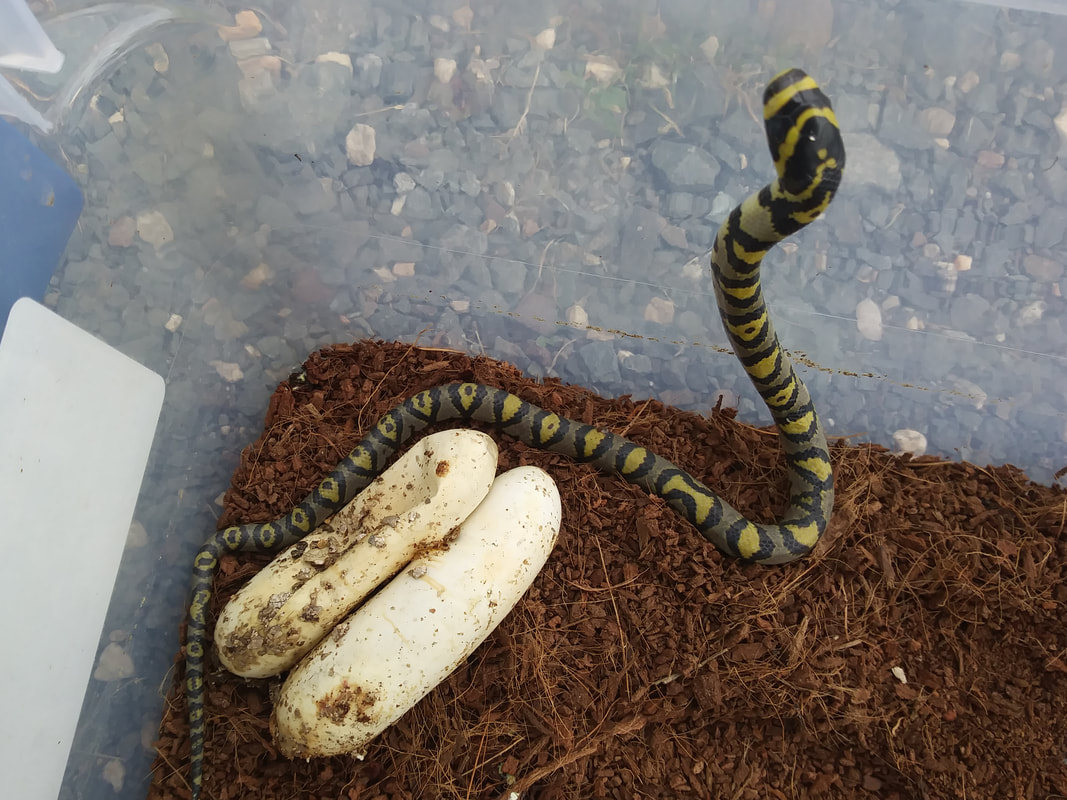This is one of the most colorful snakes available. If the standard bright yellow, black, & grey colors aren't enough for you, you can find higher yellow, reddish, and white variations of these snakes. These snakes are quite hardy once they begin feeding and the ones I've kept become very aggressive feeders. I would recommend keeping them separate to avoid fights over food items. I feed the adults several fuzzy mice which they can eat easily and quickly.
I do not provide any additional heat from these snakes. They are at the lowest around 75F and the highest 80F by way of heating and cooling the entire room they are in. I incubated the eggs at the same temperatures in a 1:1 (by weight) mix of water and large grade vermiculite. I cool them down into the 50s for about a month in the winter. I keep them on paper towels during this winter cooling but with access to a large moist hide and a dry hide and water bowl, so they could choose where they felt most comfortable.
I do not provide any additional heat from these snakes. They are at the lowest around 75F and the highest 80F by way of heating and cooling the entire room they are in. I incubated the eggs at the same temperatures in a 1:1 (by weight) mix of water and large grade vermiculite. I cool them down into the 50s for about a month in the winter. I keep them on paper towels during this winter cooling but with access to a large moist hide and a dry hide and water bowl, so they could choose where they felt most comfortable.
